
Perennial Forbs Around Las Vegas, Vegetation Around Las Vegas
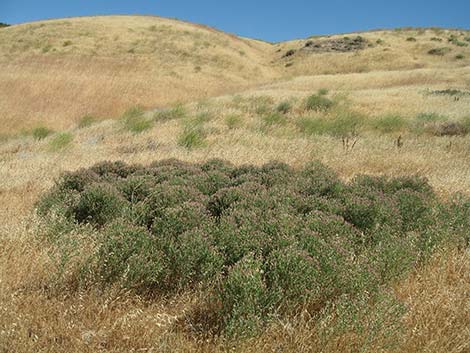 |
General: Russian Knapweed (Acroptilon repens) is an invasive perennial forb that looks much like a thistle, but without the spines. The stems are upright with flowers at the tips. Flowers pink, blue, or white. Bracts below flower (phyllaries) in several overlapping rows, oval; bract tip somewhat pointed (not comb-like, spine tipped, or dark tipped), papery. Russian Knapweed is an invasive noxious weed. Around Las Vegas, this species is uncommon -- let's all work to make sure it stays that way. Keep an eye out for this species. Land managers are actively working to eradicate Russian Knapweed, so hopefully you won't see it anywhere. Russian Knapweed is on the "Watch Weeds" list in the Lower Las Vegas Wash, and it is on the Lake Mead NRA "Top 10 Invasive Species" list. This is a noxious weed. If hikers and other visitors to the native habitats around Las Vegas see this species, please report the observation to the Nevada Department of Agriculture using their online forms. If you have this species on your private property, please consider eradicating it. |
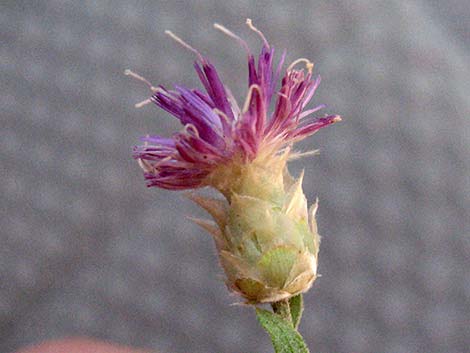 Bracts in overlapping rows, oval, with acute tips; end of bract papery |
Family: Sunflower (Asteraceae). Other Names: Turestan thistle, hardheads, Centaurea repens. Plant Form: Perennial forb from rhizomes; tall flower stalk. Height: To about 3 feet. Stems: Upright, branched, covered with woolly hairs. Leaves: Different lower and upper leaves. Lower leaves oblong, lobed. Upper leaves narrow and not lobed. Leaves either without hair or covered with woolly hairs. The leaves do not clasp the stem. |
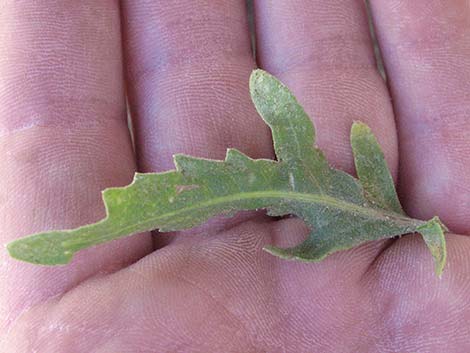 |
Flowers: Single "flower" at the top of stems. Flowerheads look like thistle flowers. Bracts below flower in several overlapping rows, oval, with acute tips (not comb-like or spine tipped); end of bract papery. Seeds: Habitat: Invasive in disturbed areas such as roadsides, fields, cultivated lands. Elevation: To about 6,000 feet. Distribution: Throughout most of the U.S. and Canada. Native to central Asia. Comments: Can be toxic to horses. For More Information: DiTomaso, J.M., and E.A. Healy. 2007. Weeds of California and other Western States. University of California Agricultural and Natural Resources Publication 3488. 2 Vol. ISBN 978-1-879906-69-3. |
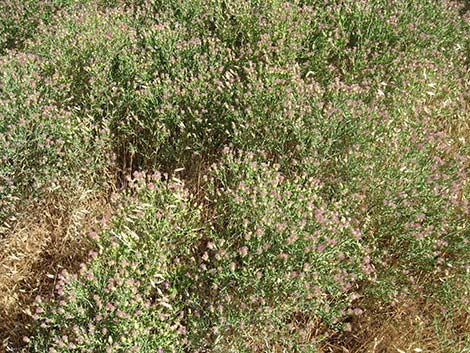 |
 |
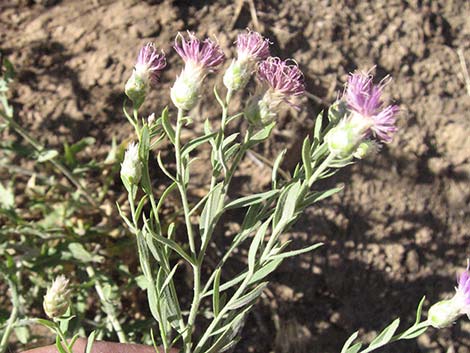 Flowerheads look like thistle flowers |
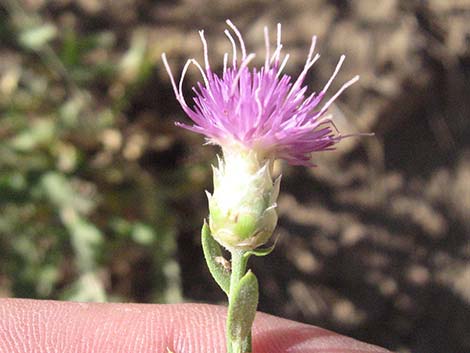 Flowerheads look like thistle flowers |
 |
 |
Note: All distances, elevations, and other facts are approximate. Names generally follow the USDA database.
![]() ; Last updated 211224
; Last updated 211224
| All Perennial Forbs | Plant Species Index | Glossary | Copyright, Conditions, Disclaimer | Home |